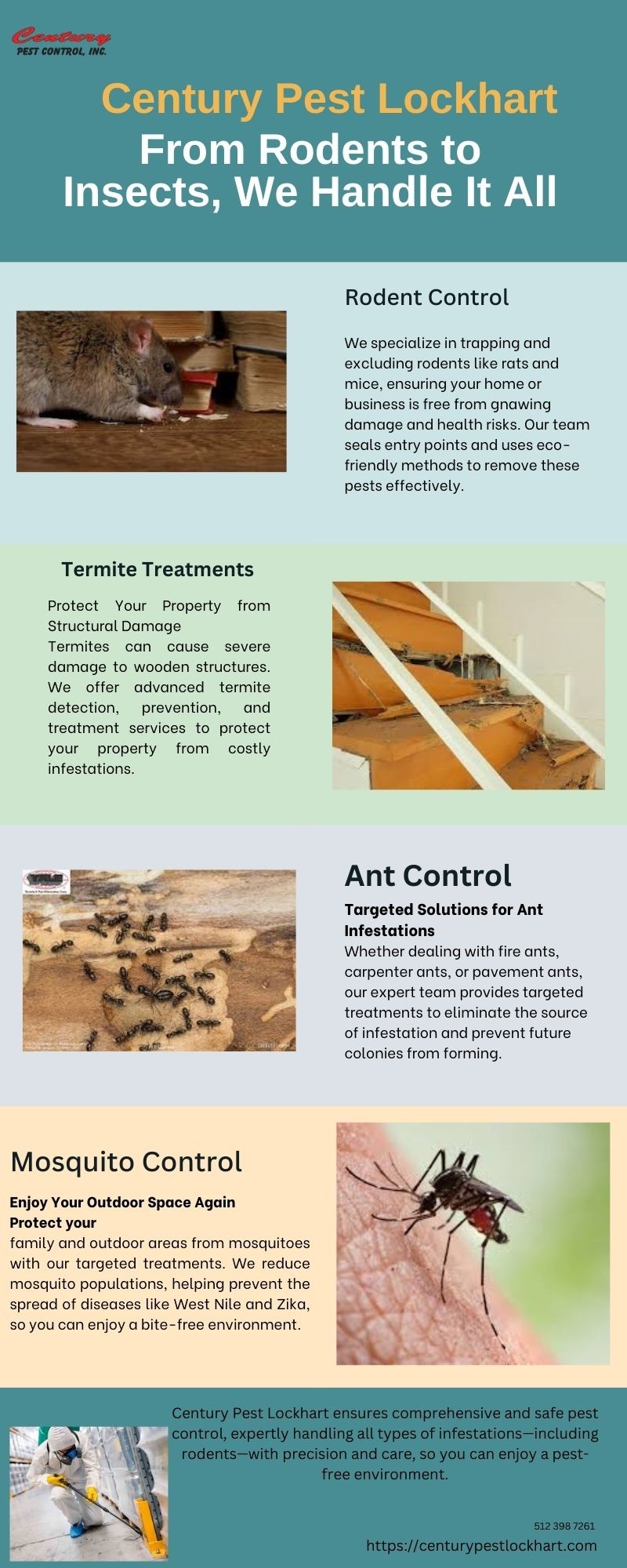Understanding Rodents and Pests: Comprehensive Solutions for a Pest-Free Environment
Maintaining a pest-free home or business is crucial for health, safety, and peace of mind. Among the most common culprits are rodents and various pests that can invade our living spaces. Each type of pest presents unique challenges and requires specialized solutions to effectively manage and eliminate them. This article will explore different kinds of rodents and pests, the problems they cause, and tailored solutions for effective pest control.
Common Rodents and Their Impact
1. Rats:
o Description: Common types include the Norway rat and the roof rat. They are known for their agility and high reproductive rates.
o Problems: Rats are notorious for contaminating food supplies, damaging property, and spreading diseases like leptospirosis and hantavirus.
o Solutions: Implementing a combination of sanitation, exclusion, and trapping can help manage rat populations. Sealing entry points, reducing food sources, and using snap traps or bait stations are effective methods.
2. Mice:
o Description: House mice are small, nimble rodents that can thrive in human environments.
o Problems: Like rats, mice can contaminate food and spread diseases. Their gnawing can cause electrical fires or structural damage.
o Solutions: Preventive measures include sealing cracks, using traps, and keeping food stored in airtight containers. Professional extermination may be necessary for severe infestations.
3. Squirrels:
o Description: While often considered cute, squirrels can become pests when they invade attics or gardens.
o Problems: Squirrels can damage roofs, wires, and gardens, and may carry ticks and other parasites.
o Solutions: To deter squirrels, secure trash bins, use squirrel-proof bird feeders, and seal entry points to your home. Relocation by a professional may be needed for those already established in your attic.
Diverse Pests and Their Solutions
1. Termites:
o Description: Known as “silent destroyers,” termites can cause extensive damage before their presence is even noticed.
o Problems: They feed on wood, compromising the structural integrity of homes and buildings.
o Solutions: Regular inspections and proactive treatments, such as bait systems and liquid termiticides, can prevent and eliminate infestations.
2. Ants:
o Description: Various ant species, including carpenter ants and fire ants, can invade homes.
o Problems: Carpenter ants can damage wood structures, while fire ants can inflict painful stings.
o Solutions: Identify the species and locate nests to apply targeted treatments. Keeping areas clean and sealed can help prevent infestations.
3. Cockroaches:
o Description: Common types include the American and German cockroaches, notorious for their resilience.
o Problems: Cockroaches can trigger allergies and asthma, and they carry pathogens that can contaminate food.
o Solutions: Effective control includes thorough cleaning, sealing entry points, and using baits or insecticides. Regular inspections help in early detection.
4. Spiders:
o Description: While many spiders are harmless, some species, like black widows and brown recluses, pose health risks.
o Problems: Their bites can cause serious medical issues, and infestations can be unsettling.
o Solutions: Keep homes clutter-free, reduce outdoor lighting, and use insecticides if necessary. Professional pest control can address severe infestations.
5. Bed Bugs:
o Description: Tiny, reddish-brown insects that feed on human blood, bed bugs are notorious for their ability to hide.
o Problems: Their bites can cause itching and allergic reactions, and they can spread quickly.
o Solutions: Integrated pest management, including heat treatment, vacuuming, and the use of bed bug-proof encasements, is essential for control.
Comprehensive Pest Management Strategies
To effectively manage rodents and pests, a comprehensive approach is essential. Here are key strategies to consider:
1. Preventive Measures:
o Regular inspections can help detect potential problems early.
o Maintain cleanliness and proper food storage to reduce attractants.
o Seal cracks and openings in structures to limit entry points for rodents and pests.
2. Professional Pest Control:
o Engaging a licensed pest control service ensures tailored solutions based on specific pest problems.
o Experts can provide insights into long-term prevention strategies and implement effective treatments.
3. Eco-Friendly Solutions:
o Choose pest control methods that prioritize safety for your family, pets, and the environment.
o Integrated Pest Management (IPM) focuses on prevention, monitoring, and using eco-friendly treatments whenever possible.
Conclusion
Understanding the various types of rodents control and pests and the solutions available is crucial for maintaining a safe and healthy environment. Whether you’re dealing with termites, rodents, or other pests, a proactive approach with tailored solutions can protect your home or business from infestations. For the best results, consider partnering with a professional pest control service that can customize a strategy to suit your specific needs. By taking these steps, you can enjoy a pest-free environment for years to come.
#pestfreelife , #rodentcontrol life
